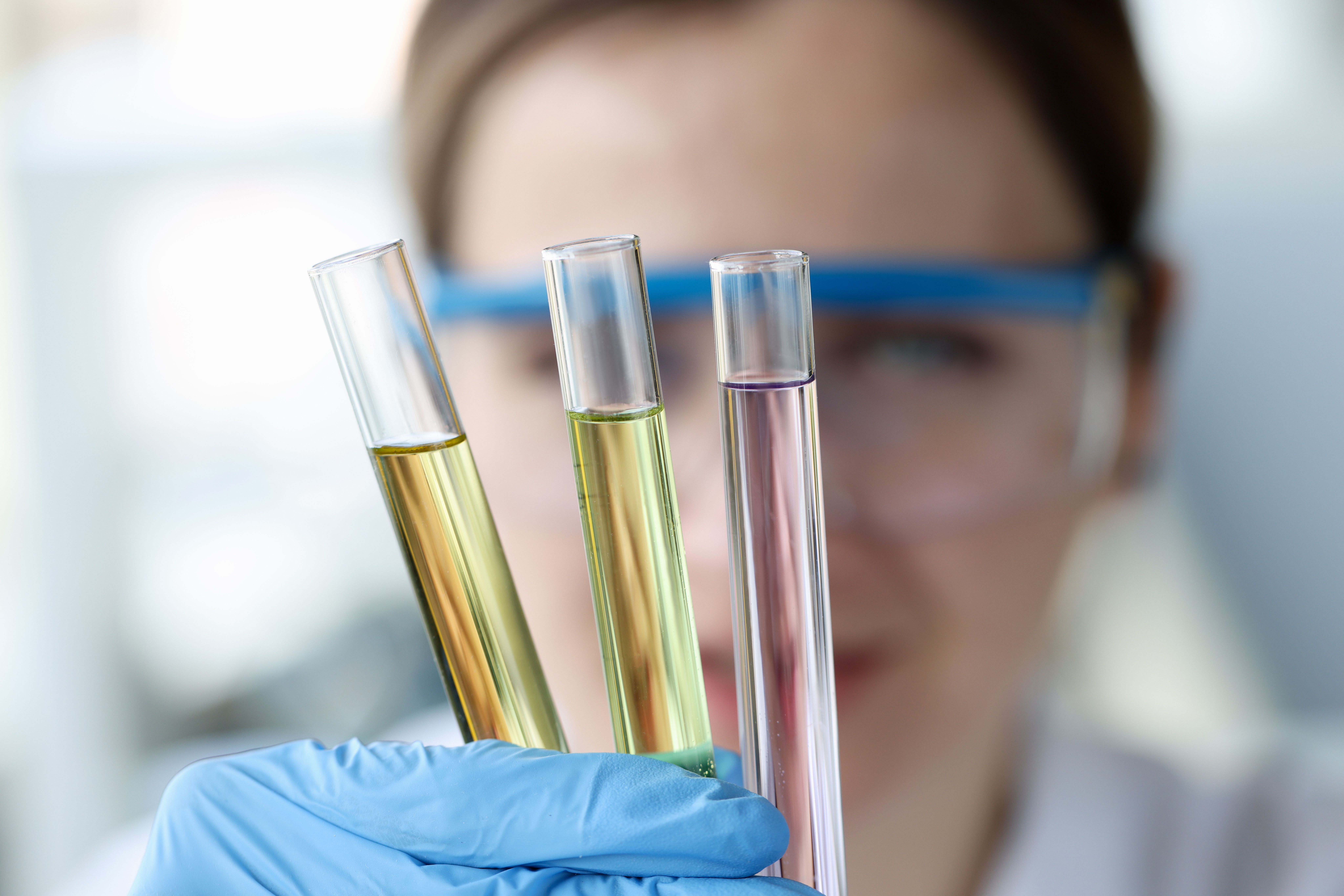Sustainable Green Solvents in Microextraction: A Review of Recent Advancements
Conventional sample preparation can be time- and resource-consuming, and a green analytical methodology can be a game-changer for scientists, in addition to facilitating selective and sensitive separations.
Microextraction using sustainable green solvents, followed by mass spectrometric (MS) analysis, comprise a combined approach that is still in its infancy, according to the authors of a recent study in TrAC, Trends in Analytical Chemistry (1). Their review defines and contrasts both a list of solvents that have proven to be effective to some degree in recent years, and the MS-adjacent methodologies and instrumentation subsequently used to classify trace compounds.
Woman scientist holding test tubes with multicolored liquids in her hands closeup | Image Credit: © megaflopp - stock.adobe.com

The five authors, who share as their main affiliation the Key Laboratory of Consumer Product Quality Safety Inspection and Risk Assessment for State Market Regulation at the Chinese Academy of Inspection and Quarantine in Beijing, China, opine that “conventional” sample preparation is not only time-consuming and labor intensive, but traditionally has made use of harmful, organic solvents (1). In examining the most prominent, modern sustainable green solvents, their objective was to show how these materials can be promising extractants for specific preparations.
Green analytical chemistry, whether defined by its 12 key principles or other metrics, is a dedicated focus of separation scientists—much of this year’s Pittsburgh Conference on Analytical Chemistry and Applied Spectroscopy (Pittcon), including the keynote address by New Jersey Institute of Technology (NJIT) Distinguished Professor and Sustainable Nanotechnology Organization (SNO) co-founder and president Omowunmi Sadik, concentrated on how far the field has come to this point, and its future potential in either the academic or industry lab (2).
“In academia, we have to think about how to make this happen,” Sadik said at the conference on February 25, saying when it comes to green analytical chemistry, scientists must “do something about it” rather than just tout the virtues of the concept.
The categories of sustainable green solvents these authors elucidated upon in their study include ionic liquids (ILs), deep eutectic and natural deep eutectic solvents (DESs and NADESs, respectively), switchable solvents (SSs), supramolecular solvents (SUPRASs), sub- or supercritical fluids (SCFs), amphiphilic solvents, and bio-based solvents (1). Evaluating these, the research team said they are collectively a viable alternative to conventional organic solvents because of numerous factors: satisfactory extraction efficiency, chemical and thermal stability, adjustable physicochemical properties, and seemingly most importantly, eco-friendliness.
Techniques commonly coupled to mass spectrometry which the authors delved into were gas chromatography (GC), liquid chromatography (LC), supercritical fluid chromatography (SFC), capillary electrophoresis (CE), inductively coupled plasma (ICP), matrix-assisted laser desorption–ionization (MALDI), ambient ionization mass spectrometry (AIMS), and mini-MS (1). These approaches are all credited with having an ability to analyze trace compounds which have diverse properties in a brief amount of time with high sensitivity and selectivity.
In concluding their review, this team of researchers listed three key points for future discussion. First, they said, more research is needed to better understand structure-property relationships and intermolecular interactions (1). Second, the authors suggest that sustainable green solvents be integrated with polymeric materials in either liquid-phase or solid-phase microextraction (LPME or SPME). And lastly, miniaturization (such as in AIMS or mini-MS) is encouraged to cut down not only on sample preparation time, effort, and cost, but also the high energy consumption of typical MS instruments.
References
(1) Zhang, Y.; Chen, M.; Li, L.; Lv, Y.; Ma, Q. Recent Advances in Microextraction Techniques Using Sustainable Green Solvents for Mass Spectrometry Analysis. TrAC, Trends. Anal. Chem. 2024, 170, 117412. DOI: 10.1016/j.trac.2023.117412
(2) Lavery, P. Pittcon Keynote Promotes Sustainable Chemistry for Human Health and the Environment. LCGC International. MJH Life Sciences, 2024. https://www.chromatographyonline.com/view/pittcon-keynote-promotes-sustainable-chemistry-human-health-environment (accessed 2024-03-26).

.png&w=3840&q=75)

.png&w=3840&q=75)



.png&w=3840&q=75)



.png&w=3840&q=75)



